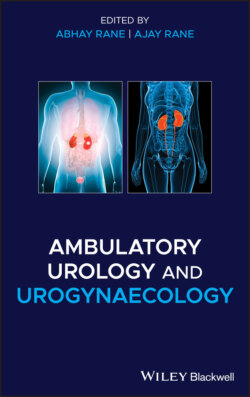Читать книгу Ambulatory Urology and Urogynaecology - Группа авторов - Страница 16
Physical Selection Criteria
ОглавлениеThere are multiple factors that reduce the suitability of patients for day surgery and must be assessed in detail prior to surgery (Fong 2014). Identifying high‐risk patients can help facilitate a multidisciplinary strategy to optimise their pre‐operative condition, anticipate intraoperative challenges, and plan postoperative disposition (Walsh 2018). Although a comprehensive review of these is beyond the scope of this chapter, we will mention a few notable parameters.
Age should not independently decide whether a patient is suitable. In one study, elderly patients did not have worse outcomes than younger patients (Chung 1999), although in another, advanced age was associated with greater rates of readmission (Whippey 2013). Ambulatory surgery may actually confer some benefits to the elderly population, having been shown to reduce rates of post‐operative cognitive dysfunction (Rasmussen 2015).
The American Society of Anaesthesiologists grading system (ASA grade) is used to evaluate a patient's physical state before surgery and classifies patients into 6 categories. Grade 1 being a normal healthy patient and grade 5 being moribund patient. The ASA grade is not a particularly useful measure of suitability for day surgery. An ASA 3 patient does not experience greater complication rates when compared to an ASA 1 or 2 in the medium to late post‐operative period (Ansell 2004). Some ASA 4 patients may also be suitable for procedures undertaken using local or regional anaesthesia.
Suitability of obese patients is a controversial area, a body mass index (BMI) of up to 40 being acceptable for the majority of procedures and many anaesthetists would accept higher BMIs (Atkins 2002). Complication rates do appear to be higher in the extremely obese group (BMI > 50 kg/m2), although readmission rates are not significantly greater (Joshi 2013).
With regards to chronic medical conditions, a general rule is that stable patients are fit for ambulatory surgery. Chronic obstructive pulmonary disease (COPD) is not a contraindication for ambulatory surgery. Asymptomatic patients have a low risk of post‐operative complications, but those who have been symptomatic within a month of the proposed surgery may need to have their procedure postponed (Warner 1996). Smokers should be encouraged to stop smoking, as even short‐term cessation pre‐operatively has been demonstrated to reduce complications (Myles 2002). Patients with obstructive sleep apnoea should have good control of symptoms and be established on nasal continuous positive airway pressure pre‐operatively and during the post‐operative period.
Cardiovascular status should also be assessed pre‐operatively. Patients with hypertension should have their blood pressure reasonably controlled. The majority of those with ischaemic heart disease will be suitable, except for those with unstable or severe angina and those who have experienced recent myocardial infarction. Additionally, ambulatory surgery is generally not undertaken within a year of drug‐eluting stent placement (Wijeysundera 2012). Diabetes mellitus does not itself preclude a patient from day surgery; in fact, day surgery reduces disruption to normal routine. However, patients should ideally be screened for other co‐morbidities including cardiovascular and renal dysfunction. Patients with end‐stage renal failure may be appropriate for minor ambulatory procedures undertaken under local or regional anaesthesia but, given their poor physiological state and the practical issues with regards to dialysis, major ambulatory operations are generally contraindicated.
